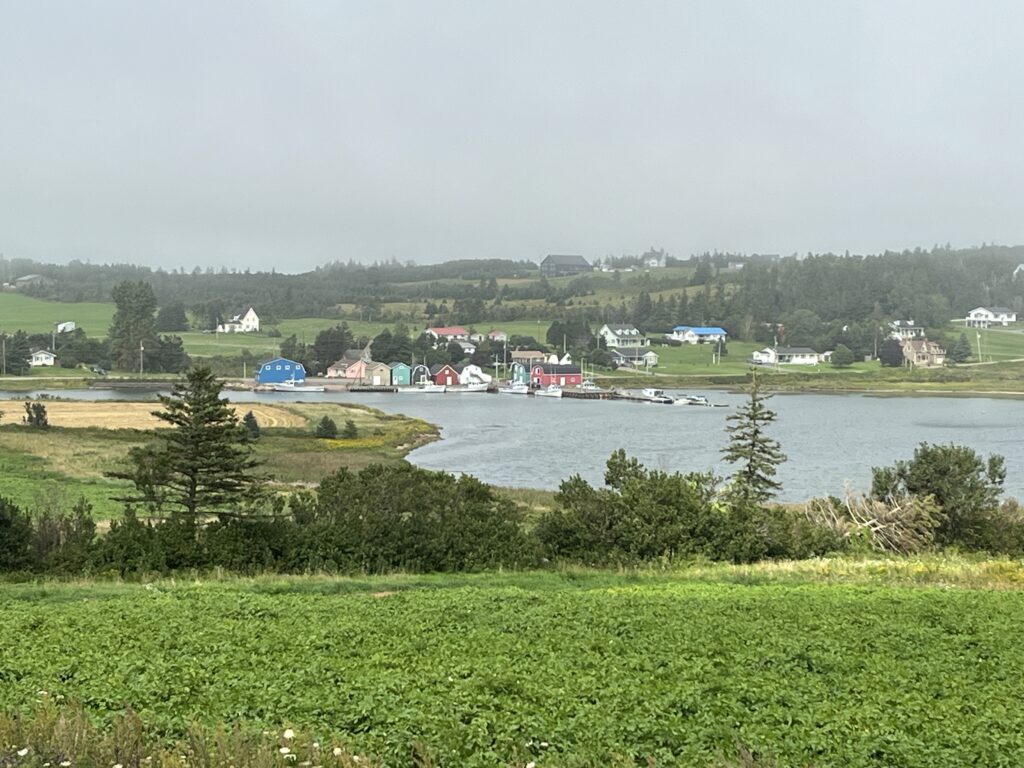The Canadian Maritimes have been on our travel list for a long time but it was always a casualty of lack of a “good weather window”. We decided a year ago to take the plunge and PEI was our first stop because it starts shutting down in mid-September.
The island is a couple hundred miles east of Maine and is actually in a time zone an hour earlier than Eastern. It’s roughly 150 miles long by 25 miles wide with lots of “nooks and crannies”. The population is about 180,000 and has three major businesses: farming, fishing, and tourism.
Our two weeks there were spent exploring the waterfront, hiking in the PEI National Park and Provincial Parks, eating seafood, and combing through a variety of small museums. The island is a beautiful and peaceful place with gorgeous landscapes and seascapes. The farms and houses are beautifully kept, landscaped, and very tidy. Many people own large lobster boats and most were out of the water and stored on their property. We theorized that this was because most of the lobster is caught in the Spring and bad weather is coming.
We expected each of the three campgrounds we stayed in to be scenic. We didn’t expect the remarkable serenity. The best word to describe the people, the atmosphere, and pace is “relaxed”. The three places we called home:
Charlottetown. The capital of the province is the largest city on PEI. It’s a quaint small city with a large number of Victorian homes and buildings and a great waterfront. There were a regular stream of cruise ships going through while we were there. Historically, it is considered the “Birthplace of Confederation” as it hosted conferences in the mid 1800’s that ultimately led to the formation of Canada.
Cavendish. This is the “home” of Anne of Green Gables and the “Disneyland of PEI”. It was the most commercial of any of the places we visited. It’s adjacent to PEI National Park which stretches over 30 miles of the Gulf of St. Lawrence waterfront. This was our basecamp to explore the fabulous PEI north coast and consume some of the world’s best mussels and oysters.
St. Peter’s Bay. Located near the eastern side of the island, it’s a small fishing village that has convenient access to the eastern parks and attractions. Our campsite was 100 yards from the Centennial Trail. The trail extends 170 miles from one end of PEI to the other and is built on the old Canadian National railroad bed. It was a great walk from our campsite to the village of St. Peter’s where we became regulars at the village fish market and coffee shop. … Just a great experience.





















































That fisheries museum is knot kidding around
ar ar !
Looks like a great trip!! Thanks for sharing.